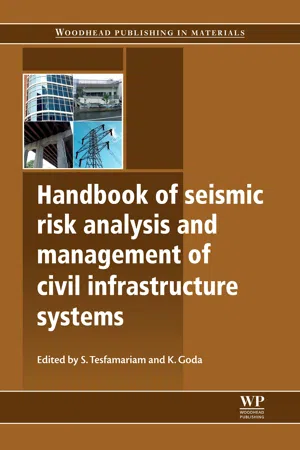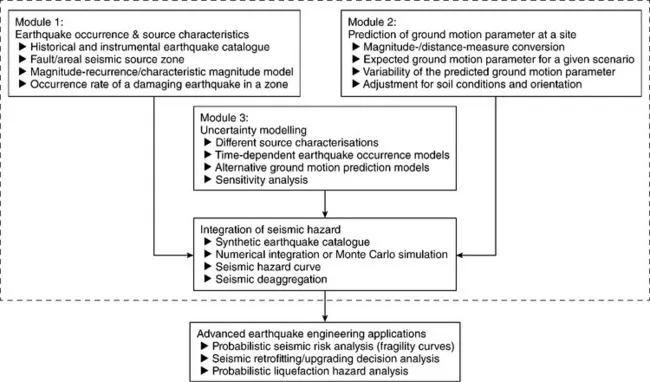
Handbook of Seismic Risk Analysis and Management of Civil Infrastructure Systems
- 912 pages
- English
- ePUB (mobile friendly)
- Available on iOS & Android
Handbook of Seismic Risk Analysis and Management of Civil Infrastructure Systems
About this book
Earthquakes represent a major risk to buildings, bridges and other civil infrastructure systems, causing catastrophic loss to modern society. Handbook of seismic risk analysis and management of civil infrastructure systems reviews the state of the art in the seismic risk analysis and management of civil infrastructure systems.Part one reviews research in the quantification of uncertainties in ground motion and seismic hazard assessment. Part twi discusses methodologies in seismic risk analysis and management, whilst parts three and four cover the application of seismic risk assessment to buildings, bridges, pipelines and other civil infrastructure systems. Part five also discusses methods for quantifying dependency between different infrastructure systems. The final part of the book considers ways of assessing financial and other losses from earthquake damage as well as setting insurance rates.Handbook of seismic risk analysis and management of civil infrastructure systems is an invaluable guide for professionals requiring understanding of the impact of earthquakes on buildings and lifelines, and the seismic risk assessment and management of buildings, bridges and transportation. It also provides a comprehensive overview of seismic risk analysis for researchers and engineers within these fields.- This important handbook reviews the wealth of recent research in the area of seismic hazard analysis in modern earthquake design code provisions and practices- Examines research into the analysis of ground motion and seismic hazard assessment, seismic risk hazard methodologies- Addresses the assessment of seismic risks to buildings, bridges, water supply systems and other aspects of civil infrastructure
Frequently asked questions
- Essential is ideal for learners and professionals who enjoy exploring a wide range of subjects. Access the Essential Library with 800,000+ trusted titles and best-sellers across business, personal growth, and the humanities. Includes unlimited reading time and Standard Read Aloud voice.
- Complete: Perfect for advanced learners and researchers needing full, unrestricted access. Unlock 1.4M+ books across hundreds of subjects, including academic and specialized titles. The Complete Plan also includes advanced features like Premium Read Aloud and Research Assistant.
Please note we cannot support devices running on iOS 13 and Android 7 or earlier. Learn more about using the app.
Information
Probabilistic seismic hazard analysis of civil infrastructure
Abstract:
1.1 Introduction: past developments and current trends in assessing seismic risks

Table of contents
- Cover image
- Title page
- Table of Contents
- Copyright
- Contributor contact details
- Preface
- Part I: Ground motions and seismic hazard assessment
- Part II: Seismic risk analysis methodologies
- Part III: Assessing seismic risks to buildings
- Part IV: Assessing seismic risks to bridges and other components of civil infrastructure networks
- Part V: Assessing financial and other losses from earthquake damage
- Index